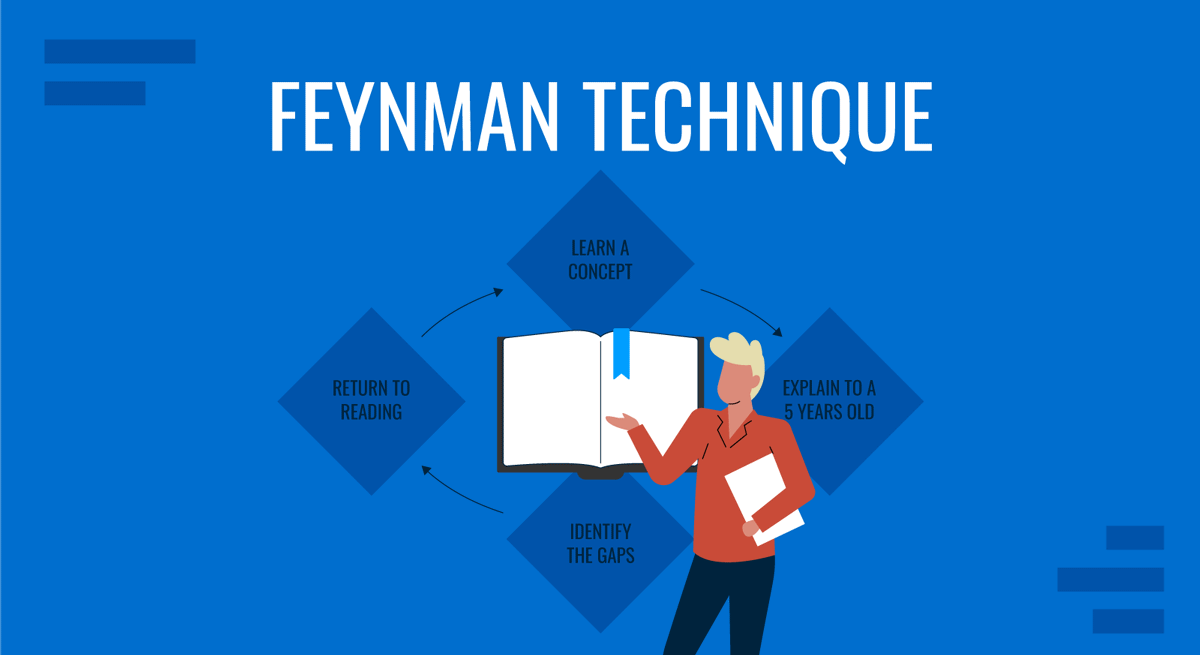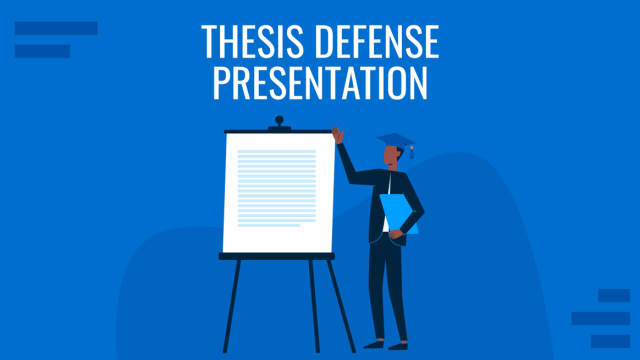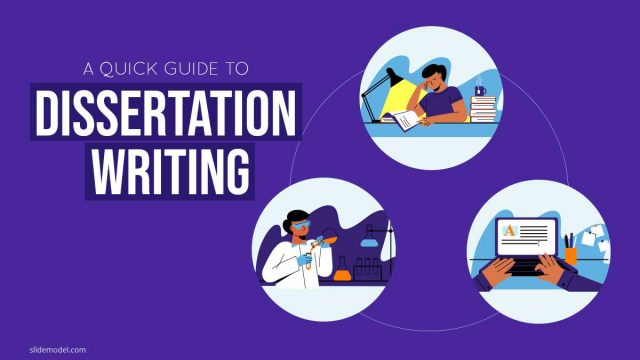
Many people think they know a concept well until it’s time to explain it to someone else! Even experts in a subject cannot explain it in simple words, with the most difficult questions often being the simple ones. Many people can have gaps in their knowledge without even realizing it. Therefore, digging deep into a concept to possess true knowledge is important. Not to mention, presenting a concept before an audience is essential. Therefore, you can use the Feynman Technique to test your knowledge using a four-step process.
What is the Feynman Technique?
The Feynman Technique is named after Richard Feynman, who won the Nobel Prize in Physics in 1965 for his contribution to developing quantum electrodynamics. He was famous for simply explaining incredibly complex topics, which is why the Feynman Technique provides a four-step process to simplify information by breaking it down to a level that anyone can understand. The technique forces an individual to attempt to explain a concept to understand their grasp on the subject to improve knowledge.
How to Use the Feynman Technique?
The basis of the Feynman Technique can be explained by a famous quote often attributed to both Richard Feynman and Albert Einstein:
“If you can’t explain it to a six-year-old, you don’t understand it yourself.”
The Feynman Technique can be applied by selecting a concept, attempting to explain it, observing the gaps in your knowledge, and refining your explanation.
1. Choose a Concept to Learn
To start with the Feynman Technique, you must select a subject. Whether you’re preparing for a PowerPoint presentation for school or need to explain something associated with a project or concept at the workplace, the technique can work for you. To practice this technique, you can even start with a random topic that you might be interested in and seek help from friends, family members, or colleagues to help you practice the Feynman method of studying.
2. Attempt to Explain the Concept
Once you’ve selected a topic, the next step is to try to explain it in simple words. The topic can be one you understand well or one you might have recently studied. Before moving on to step two, make sure you have taken the time to explore the topic in detail and are ready to explain it. Ideally, You should also have a mock Q&A session with someone to see what questions they ask and if you have the answers to them.
3. Observe the Gaps in your Knowledge
You can be a salesman selling a product for years, a network engineer with several years of experience, or even a vendor supplying goods to clients for many years. Regardless of which sector you are employed in or what type of business you are running, chances are many things you don’t know. It’s not just frequent changes in technology and products that can leave gaps in your knowledge but also changes in laws, lack of knowledge about the history of a product or service, or lack of training.
These types of gaps in knowledge can have a major impact on your career, business, or long-term financial earnings. Therefore, step three in the Feynman Technique involves understanding gaps in knowledge to “know what you don’t know.”
4. Reflect and Refine your Explanation to Simplify it
The final step in the Feynman Technique is to refine your knowledge. This can be done by digging out the missing bits of information identified during steps three and four. Suppose you are using the technique to improve your knowledge of a concept related to your job or business. In that case, you can also consider going further by getting advanced training or seeking help from an expert.
A litmus test for gauging if you truly understand the concept using the Fenman technique is if you can explain it in simple words to someone. Once you pass that test, you should be able to master the concept.
Benefits of Using the Feynman Technique
The Feynman Technique can have several benefits, regardless of whether you’re looking to improve your knowledge regarding a topic, boost leadership skills, or need to prepare for a test for school or an interview for a job. Using the Feynman technique can enable you to pass a test, succeed at a job interview, and even help you succeed as a leader.
Improve Your Knowledge Regarding a Concept
One of the most common reasons for using the Feynman method is to improve understanding of a concept. This can be something related to your academic or professional assignment, a project you are working on, or even to be better at something you do as a hobby.
Develop Critical Thinking
Employees who remain small cogs in a big machine seldom reach the top. People constantly looking to improve their knowledge and skillset will likely advance their careers and achieve desired goals. For this purpose, critical thinking plays a major role. Some employees remain stuck in a single job role for several years, while others advance quickly. The latter often includes individuals who like to take initiative, improve their knowledge and skills, and attempt to remain updated with what matters the most regarding their profession.

Similarly, students who excel academically do so by improving their knowledge. The Feynman method pushes individuals towards critical thinking to raise their inquiry level. We are enabling them to develop critical thinking.
Boost Leadership Skills
In a previous article, we discussed the Peter Principle, which implies that in an organization, people tend to be promoted until they reach a level of incompetence. This often happens due to gaps in knowledge and a lack of initiative. Therefore, boosting one’s leadership skills requires employing methods like the Feynman Technique to improve one’s knowledge, skills, and ability to lead a team.
Improve Teaching Skills
A good teacher can explain a concept in a way that students can easily grasp. This is also the basis of the Feynman Technique. Hence, using the Feynman method can also help you improve teaching skills and better explain topics in a manner that is easy to grasp by anyone, even a six-year-old!

Help Solve Complex Problems
The Feynman Technique can also help you solve complex problems. The technique can be used along with other problem-solving techniques, such as the 5 Whys or the Fishbone diagram. By trying to understand an issue in detail and identifying solutions based on knowledge, you can apply the Feynman Technique for problem-solving. This is because you are likely to succeed in finding a solution when you have in-depth knowledge regarding a topic rather than without understanding the problem in depth.
Prepare for a Test or Interview
Have you ever given a test or found yourself short of answers at an interview that you think you should have been able to pass? Even people who have been engaged in a profession for decades can miss out on a job interview because they could not answer or explain something when it mattered the most. You might have spent several years writing reports, managing projects, and leading teams. However, can you explain your success simply during a job interview? Sometimes, it’s not the lack of knowledge but the inability of an individual to put it in words that can mean the difference between success and failure. The Feynman method can help overcome such issues.
Prepare for a PowerPoint Presentation
With the evolution of PowerPoint presentations, the audience’s attention spans have also changed. Not only is there a greater chance of Death by PowerPoint due to short attention spans, but the fact that people in the audience are often browsing their phones during presentations can mean that someone can easily come up with a query regarding your topic that you might not know about.
A presenter can be an expert at the subject they are presenting. However, all it takes to confuse someone is for a novice to search on the topic and find something the presenter might not know about. Be it recent research, historical information, or a rumor from a dubious website. Either way, using the Feynman Technique can help you avoid looking confused at such a moment and be better prepared for all types of queries.
Applying The Feynman Technique for Presenting Anything
When creating and presenting a PowerPoint presentation, the Feynman Technique can be your guide towards ensuring you don’t get a brain freeze during a Q&A session or end up reading from your PowerPoint slides. Below is a guide for using the Feynman Technique for presenting anything!
1. Write Down Your Presentation Topic with Key Points
You can apply the Feynman Technique by writing down your presentation topic and key points. Use the initial information to form an outline, followed by the basic text for your presentation.
2. Analyze if the Concept can be Explained Easily
In the next step, try to conduct a mock presentation by presenting your slides. During this time, you can also analyze the need for visual aids. You can seek help from family or friends to ask tough questions to help you understand how well you can explain the concept.
3. Find Gaps in Your Presentation
Whether you use infographics, clipart, or videos, you should be able to explain the topic yourself first. Conducting a mock presentation before adding visual aids can enable you to identify gaps in your knowledge. Once you have identified the gaps, you can seek to improve the presentation and go for a couple of mock presentations until you are satisfied with your ability to answer queries.
4. Refine and Simplify your Presentation
Based on issues identified in steps three and four, you can now refine and simplify your slides and add visual aids to help answer some potential queries beforehand. This is because while you might have gained a good grasp on the subject and might be ready to answer all types of queries, you will need to account for time and provide enough information to satisfy curious audience members even before the Q&A session starts.
Final Words
You can study a concept several times and assume that you know all there is to know about the concept, only to be jolted with the bitter reality of not knowing enough! This is a common dilemma across many sectors, including the IT sector, where technology evolves every few months due to the release of new devices, operating systems, and apps. Similarly, people who spend several years working at an organization can know very little about the wider scope of work the organization is engaged in, becoming small cogs in a big machine with limited knowledge.
Lack of knowledge, be it at school, the workplace, or even when doing daily chores, can negatively affect you. Perhaps one of the litmus tests of such knowledge is when you must present a concept or talk about a subject. You can never be sure what type of question the audience might ask or how much they might grasp the information you are presenting unless you have practiced your presentation enough and can explain your subject so that even a six-year-old can understand. This is why the Feynman Technique can have widespread implications for people who use it by enabling them to focus on important information to understand and explain anything, anywhere.


